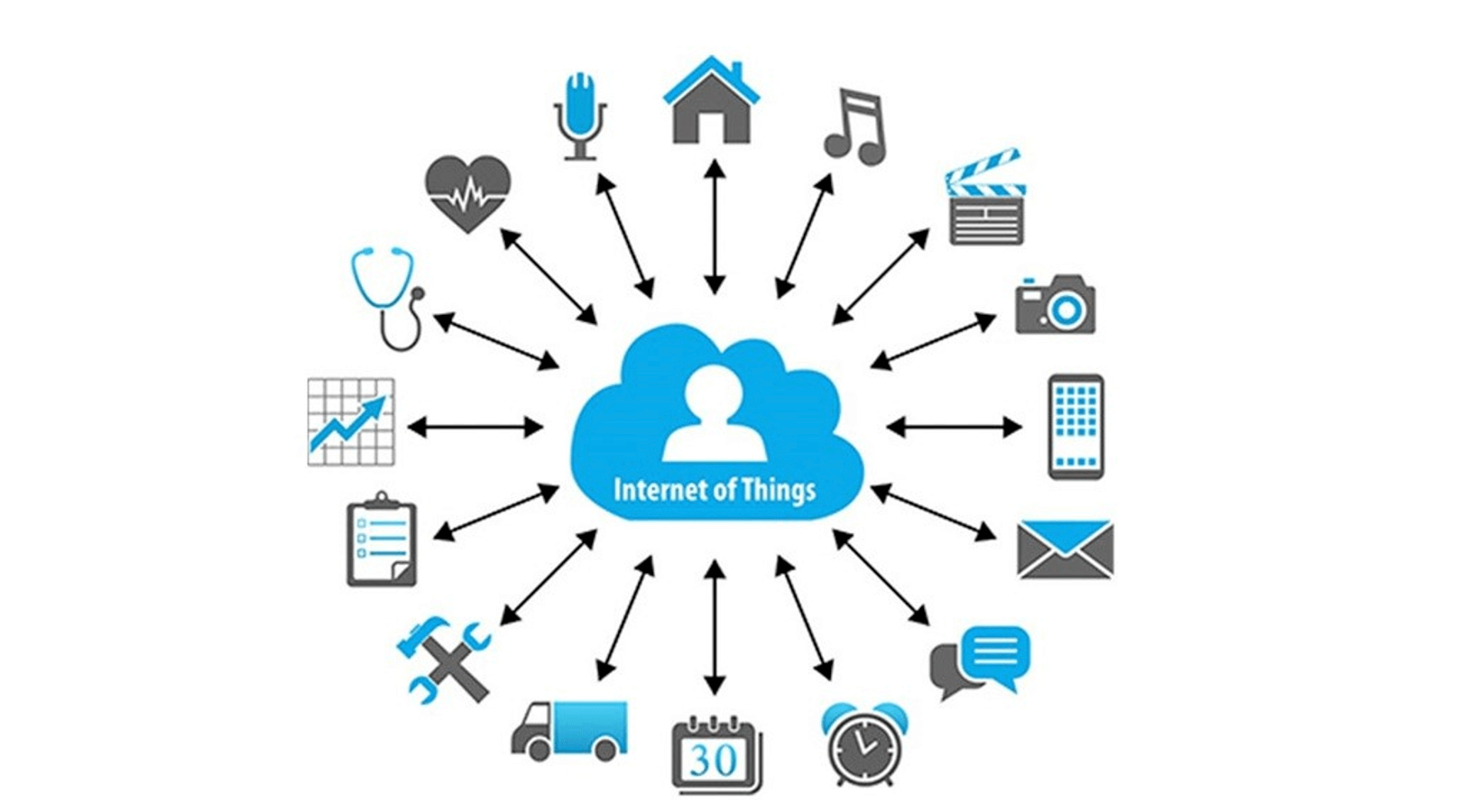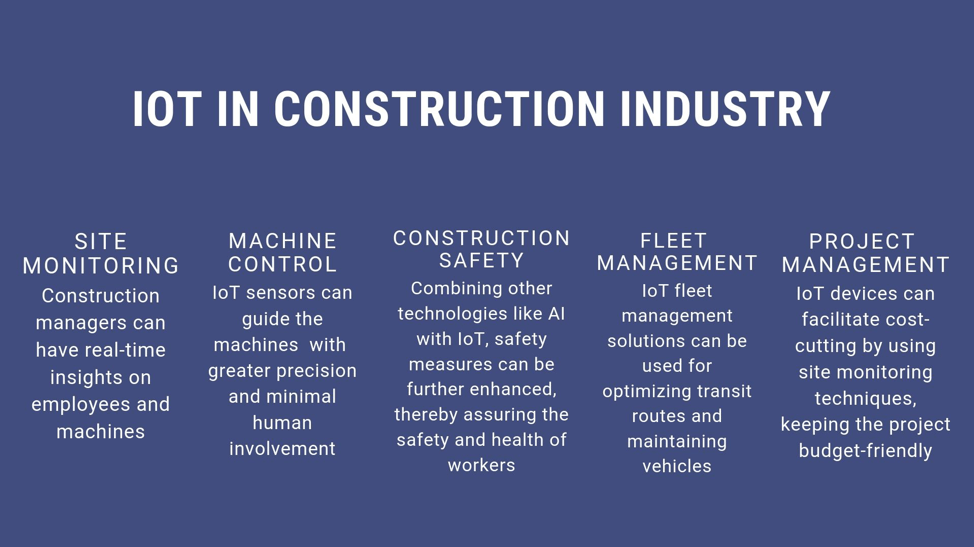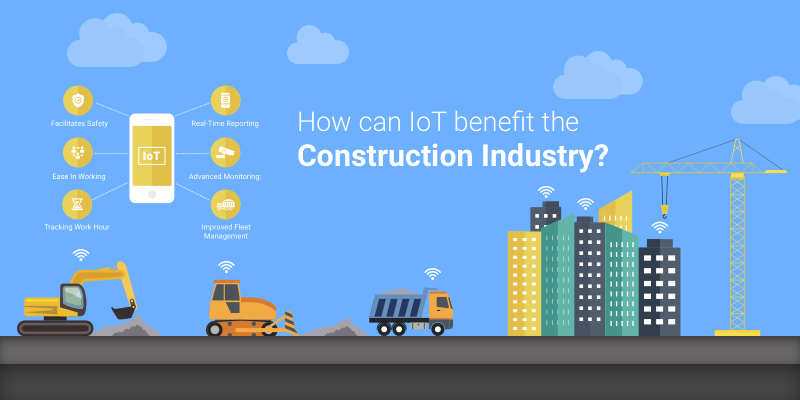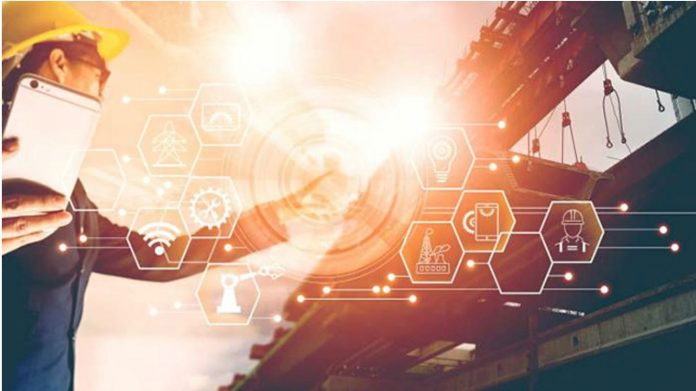The internet of things ( IoT ) is an idea that has been around for several decades. Since its creation, innovators have been waiting for technology to advance enough to implement it practically.
IoT is expected to be used in many construction and real estate areas in the future, including facilities, infrastructure, and homes and businesses. The construction industry is not the most advanced in terms of IoT use.
Project managers and investors are still hesitant to employ the technology since they don’t know how to use it and are skeptical of its effectiveness. Here’s how IoT works and what it can do in the construction industry today and in the near future.
What is IoT? A Brief Introduction

The Internet of Things (IoT) is a network of physical devices, vehicles, home appliances, and other items embedded with electronics, software, sensors, actuators, and connectivity, enabling these objects to connect and exchange data.
Through its embedded computing system, each thing is uniquely recognizable but can interoperate within the existing Internet infrastructure. Experts estimate that by 2021 there will be over 50 billion IoT devices.
IoT in Construction: What can they do together?
The only goal of IoT in the construction sector may be defined as the use of technologically based devices and equipment to ensure optimal use of available resources with correct technological planning and regulated expenses at the cost of minimal and low risks.
Because the construction industry is directly evolving and growing with the growth of the population to meet their needs, they are adopting new tactics, techniques, and technologies to improve their efficiency and combat the prevailing construction business challenges and concerns.
The Internet of Things (IoT) offers a site where equipment, materials, and workers are synchronized to a central server that governs and monitors their activities in real-time, assuring adherence to current policies and ensuring their safety. In today’s construction industry, there are several gadgets created and managed for diverse reasons.
Future of IoT in Construction Industry
The future of IoT in construction appears bright, as companies such as Trimble, Pillar Technologies, ES Track, and others are developing products and launching them in the market. They are encouraging construction business owners to try and see for themselves the significant benefits of the technology.
According to McKinsey, it has been stated that the construction industry has been sluggish to adopt new technologies such as IoT and that the sector is under-digitized, with enterprises failing to grasp the potential of AI, IoT, and other digital tools as growth and efficiency drivers.
On the other hand, construction firms are acutely aware of the need and possibilities of digital technology. According to a KPMG survey, 95% of construction organizations believe emerging technologies like IoT will fundamentally impact their industry. Another 72% say new technology adoption, including IoT deployments, is part of their strategic strategy or vision.
According to PwC, 98% of industrial organizations expect digital solutions like IoT-enabled predictive maintenance or augmented reality to boost efficiency by up to 12%. Construction is primed for digital change, and businesses that don’t respond swiftly risk being left behind.
Applications of IoT in Construction

● Wearable Devices to Avoid Injury
These are the gadgets that everyone working on a construction site, especially laborers, must wear. If the worker gets too close to a risky zone, this can be used to alert him. This is also used to track the position of a worker in the event of a tragedy or injury.
Such wearables are outfitted with essential gadgets connected to the central server, which serves as a data repository and, in some ways, a control center where workers can receive real-time instructions.
Smartcap is an example of a company that makes wearable equipment for workers.
● Sensors to Monitor the construction site
Construction site managers can assure safety in the region, foresee and reduce the damage caused by natural disasters, and respond quickly to on-site accidents by using a variety of sensors — noise, vibration, motion, and others.
The connected and monitored device using IoT software and procedures may monitor humidity, temperature, and pressure calculations to inform management of any potential harm that requires immediate care.
● Real-Time Site Map
This technology can be used to locate the workers on the job site and keep them out of the danger zone. It can be used to create a real-time map of the construction site so that everyone knows who’s where and what work is being done.
In the case of a truly dire situation, some danger zones and managers’ only zones can be marked on the map, and others can be discouraged from entering such spaces if it’s not necessary. IoT Devices may capture all of this data on the site and put it to good use for the projects.
● Maintenance Systems to track construction-related expense
Some applications can assist in keeping track of fresh and imminent construction-related expenses on and off the job site. They provide precise and accurate data that may be recorded and tracked.
Bimba is an example of a tool that might be useful in tracking real-time machine downtime and data on the building site. If you want to make such an application, you must hire app developers as they are well-versed with the technology and will cater to all your requirements.
What Challenges Does IoT Solve in the Construction Industry?
With the rise of urbanization and population density, the construction industry has become one of the most important contributors to global prosperity. According to statistics, construction will account for 13.2 percent of global GDP by the end of the year.
Construction efficiency and profitability have a direct impact on the global economy. Even though the sector is continually evolving and new management methods are being implemented, there are numerous issues that managers and contractor teams must deal with.
Here are some of the important construction challenges that the Internet of Things can assist solve:
1. On-budget and on-time project delivery
The inability to complete projects on time has long been a problem in the construction industry. However, it is becoming increasingly relevant now, as the rising complexity of construction designs makes it more difficult to predict delivery timelines and prices.
The use of IoT can increase the precision of estimates, giving construction industry owners, managers, and investors more confidence.
2. Safety Concerns Can’t be Underseen
Construction has one of the highest fatal injury rates in the world. The following are some of the most common causes of workplace fatalities:
- Protective equipment failure;
- Electric shock;
- Falls from heights;
- Injuries from repetitive motion;
- Trench collapse.
Although there are protocols and safety checklists to help prevent workplace injuries, workers are often unaware of them and fail to follow them.
IoT might enable site managers to give real-time instruction to their workers while also lowering the number of injuries and medical-care-related costs on the job. To implement this advanced technology, you can reach out to a custom mobile app development company.
3. Skills and labor shortage is a big issue
The construction industry was one of the hardest hit by the recession. Thousands of people have left their employment and never returned, creating a massive skills vacuum that we are still dealing with ten years later.
As more boomers retire from the construction industry in 2020, there will be a shortage of young, competent individuals to replace them. According to the JOLTS study, there is currently a shortage of 350,000 employees in the field.
IoT-based automation is a means to ensure that all pending projects are done as quickly as possible until new workers arrive on the scene.
Benefits of IoT in Construction Industry

The Internet of Things is already beginning to transform industries across all sectors. We are starting to see how its unique advantages—increased connectivity, machine-to-machine communication, data analytics, edge computing—will create profound benefits for businesses and society.
● Resources Management and Budgeting
Any construction company’s most serious difficulty is sticking to the budget. Frequently, available resources are not handled in line with their true worth, workers are idle, and the true value of the use of rented equipment is not correctly assessed.
IoT can assist real-time business owners in tracking and generating a clear plan of complex budgeting in a single step and using the most widely used and practical techniques to reduce project costs by ensuring timely delivery of new equipment and other resources.
It can also assist in making plans by keeping track of available resources and maximizing their value without wasting any.
● Waste Management Is a Must
The law requires construction firm owners to dispose of trash and recycle waste. Construction managers must consider fuel costs for logistic operations, the requirement to document trash disposal, and select the most economical recycling techniques.
The following are the essential objectives for project managers when it comes to waste management:
- Developing a workable disposal strategy;
- implementing zero-waste, sustainable construction techniques;
- educating the workers on environmental issues;
- Disposal of various waste types;
● Daily Remote Management
This can also allow for daily remote control of the workers, with the site evaluation being as accurate and precise as the workers in real-time to the person viewing it.
The project leader or owner can track real-time movement and get a clear view of the project’s status and daily work analysis from anywhere they want.
Drones, for example, can be deployed to do a safety assessment of the situation on-site, sometimes even before the battle begins. Such remote devices can be helpful when construction takes place in locations inaccessible to humans, polluted, or unsafe to be in. After post-machine analysis, the work environment can be made human and labor-friendly.
So, these are the various ways IoT’s impact is required and evident in the construction industry.
Wrapping Up
The construction sector is adopting these new technology and communication strategies, but it should not be overlooked that this is still a somewhat slow process. If you want to design an IoT solution for your construction project, contact IoT development companies in India.
Their app developers have worked on projects in various areas, including healthcare, finance, and education. They also provide scalable architectures, such as wearables, sensor-based platforms, and BLE trackers.
Good luck!




































